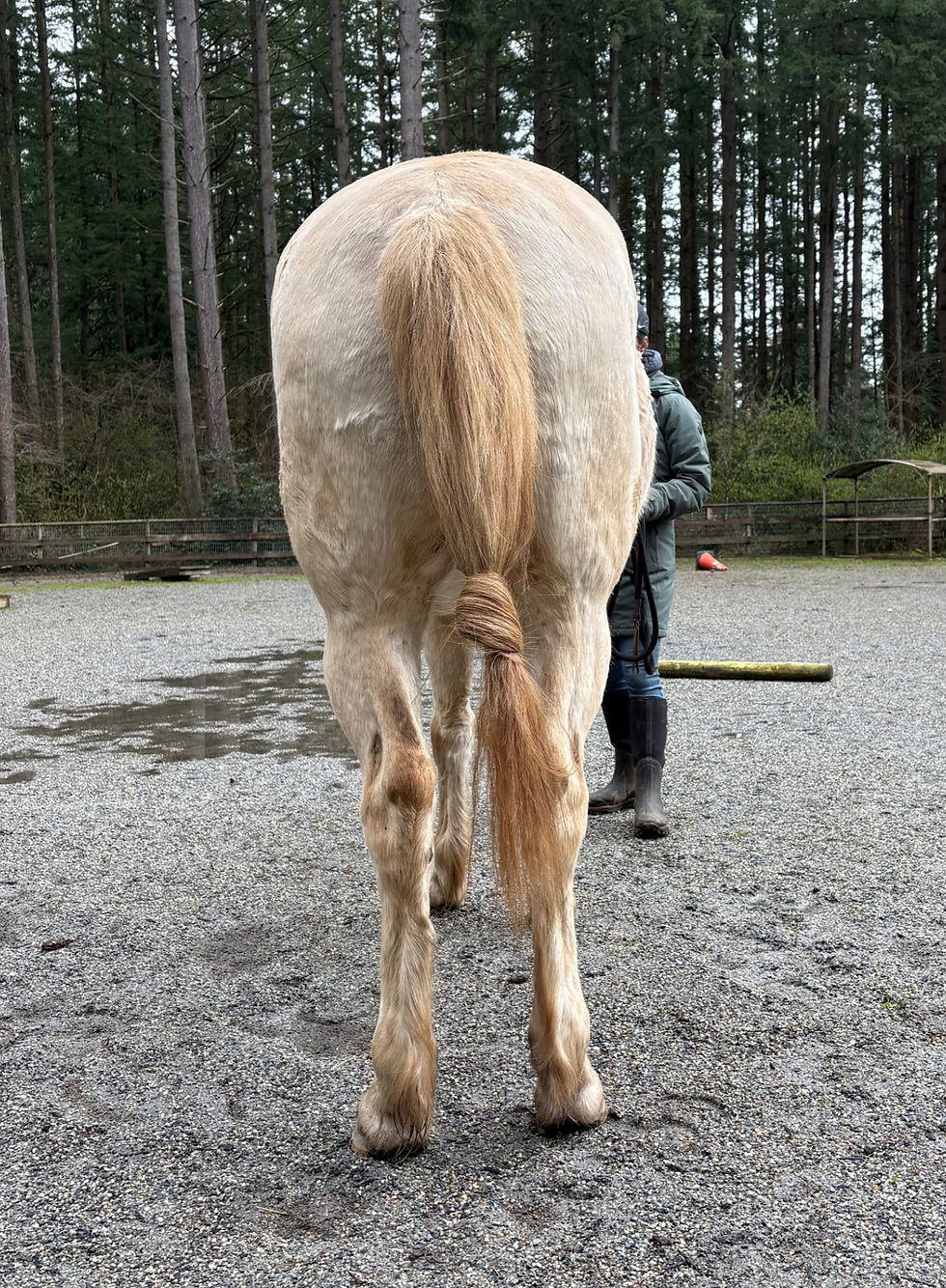Why Trust Matters When It Comes To Therapy
- Elisse Miki

- Dec 13, 2021
- 4 min read
Updated: May 26
Captured footage below of a simple yet effective trust building exercise.
Therapy can only be as effective as the patient believes it will be.
When I take on a horse for the purposes of therapeutic rehabilitation, my first goal is always to build trust in the efficacy of my treatment proposition. If the horse does not find value in the work, it can be very difficult to implement shifts in physiology.
But How Is This Done?
There are many ways to build mindful trust but one that resonates most deeply with me is building a line of communication where I can demonstrate to the horse that I am listening with clear and present energy. Much like they would find in the comfort of an emotionally stable herd.
To explain one of the steps in this process, I am sharing a real-world example of a horse I am currently working with.
Meet Monty

Monty is the horse in this video demonstration. He has various structural limitations and multiple visceral restrictions but before I could fully embark on the rehab journey with him it was clear that he desired a deeper understanding of the value in my offer.
He consistently showed a lack of trust in the process. From ground exercises to therapeutic techniques there was a quiet reserve. The message became clear that in order to make the most of his time here, I must first honor his request to meet the needs. In this case, the need was trust. Trust in me, trust in the other people working with him, trust in the manual techniques, and trust in the overall process. It became my. job to convey safety and trust to him.
For the first three months he was here I did not see him lay down once. There was no evidence that he had taken rest as there were never any furry indicators of grounded relief. Granted, his first few months in the herd were tumultuous, to say the least, as he navigated his place in this new community. But over the last few months he solidified a position in the herd and gained their trust. And this was when I started to see small glimpses of release in the form of laying. As he continued to find his way and purpose in this “new world” these moments started turning into slightly longer reprieves and then more recently, full laying down sleeps with the mindful watch of the herd. He is finally accepted.
However, one thing he has continued to struggle with is allowing a human to be in his space while he is laying down. This reality has been a hard pill for me to swallow having four other horses who not only accept me but even invite me into laying space with them. But as all equine mentors come with their unique teachings, such is this for me.
In This Video
This day I decided to try elements of a walking meditation I learned from the amazingly talented Elsa Sinclair of Freedom Based Training. The essence of this practice is to stay in harmony with the horse by acknowledging each communication no matter how small. It can be the flicker of an ear, the twitch of the nose, or even just a subtle blink. My acknowledgement is that I change focus in response to the horse’s communication. If he twitches an ear, I move positions or change the direction of my gaze. And I only stay as long as the next subtle change in focus presents. If you watch a herd of horses for long enough you will notice that they are always communicating in this way with each other. Its sometimes quite subtle and other times louder but it is always happening if you can maintain your focus long enough to digest it.
As this exercise went on, I felt an invitation to offer watch for him and the magic unfolded as he gave his whole body into our shared space. This was the first time I have ever seen him lay completely flat out and in the presence of a human.
By offering communication in the form of acknowledgements through my own body I was able to share close space in harmony with him. When he released his body and trusted in me enough to watch for him I knew something special had just happened. The more I can provide him communication that is consistent with herd dialogue the more I am able to build his trust.
If you have ever been curious about building these types of channels in communication with your horse, I encourage you to give this exercise a try.
To see Elsa's teaching on this practice CLICK HERE
In Summary
Monty’s journey is just beginning, and this exercise was one of the first steps in that process. Without his belief in the value of what I have to offer, the therapy could not begin to its fullest capacity. His healing and rehabilitation is directly dictated by his level of perceived value in the work. Much like my human patients, those who believe in the efficacy of the therapy tend to get better results than those who do not.
And this is why trust matters when it comes to therapy.
Ready to Learn More?
Explore our Free Resources for tools you can use right away, dive into our Online Courses to deepen your knowledge, or join one of our Certification Programs to take your equine therapy practice to the next level.






Comments